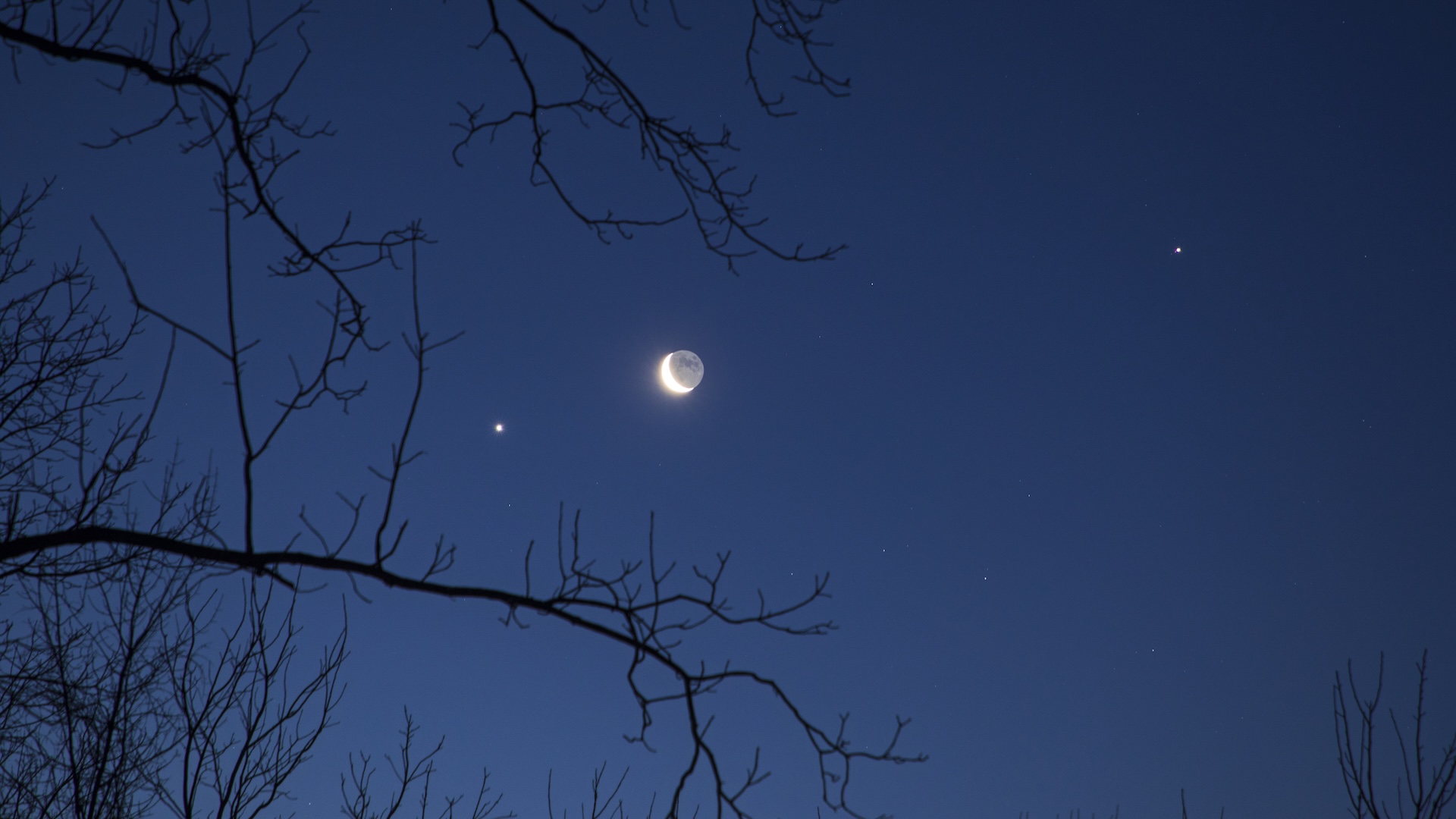By Jamie Carter
Copyright livescience

Skip to main content
Close main menu
Live Science
Sign up to our newsletter
View Profile
Search Live Science
Planet Earth
Archaeology
Physics & Math
Human Behavior
Science news
Life’s Little Mysteries
Science quizzes
Newsletters
Story archive
Skyscraper-sized asteroid flyby
Mysterious hand positions on Maya alter
Anthropologist Ella Al-Shamahi on human origins
Treasure in scorched Roman-era house
Ant clones members of another species
Don’t miss these
Venus and Jupiter conjunction: The 2 brightest planets will ‘kiss’ early Tuesday morning
Moon, Mars, and meteors: Why July 28 is the best night for skywatching all summer
See the final ‘planet parade’ of 2025, starting this weekend
Nine best things to see in the night sky with binoculars: August to November 2025
A rare ‘black moon’ rises this weekend: What is it, and what can you see?
The full ‘Sturgeon Moon’ rises this weekend
The Perseids are about to peak — here’s how to watch the glorious meteor shower without the full moon ruining the show
How to stream Sunday’s ‘blood moon’ total lunar eclipse
Perseid meteor shower 2025: How to see ‘shooting stars’ despite the full moon
The full ‘Corn Moon’ rises this week — bringing a ‘blood moon’ lunar eclipse to most of the world
Who will see the ‘blood moon’ total lunar eclipse this weekend?
2 meteor showers to peak on the same night. Here’s how to catch them at their best.
You can see a giant ‘hole’ shoot across Saturn this summer — and it won’t happen again until 2040
2 ‘new stars’ have exploded into the night sky at once — potentially for the first time in history
A blood moon is coming: Here’s what you need to know about the total lunar eclipse on Sept. 7
How to see the moon, Venus and the bright star Regulus in an ultraclose conjunction tomorrow
Jamie Carter
18 September 2025
Watch the crescent moon, Venus and the bright star Regulus align in a rare predawn close conjunction tomorrow.
When you purchase through links on our site, we may earn an affiliate commission. Here’s how it works.
On Sept. 19, the crescent moon will have Venus and Regulus to its lower right.
(Image credit: Matt Champlin via Getty Images)
One of the best naked-eye stargazing sights of the year is on offer to skywatchers this week — if you can rise before the sun Friday (Sept. 19). Just before sunrise, the crescent moon, the brilliant planet Venus and the bright star Regulus (the brightest star in the constellation Leo) will cluster together on the east-northeast horizon.
There will be barely half a degree between each of the three objects, which is less than the width of a little finger held up against the sky. This triple conjunction of naked-eye objects is a rare sight worth trying to see.
Visible low in the eastern sky about 90 minutes before sunrise, the waning crescent moon will be about 6% illuminated. The slender moon itself will be a gorgeous sight, thanks to the bonus “Earthshine” — the sun’s light reflecting off Earth back onto the moon to illuminate its dark side. The dazzling sight will be visible both to the naked eye and in simple stargazing binoculars.
You may like
Venus and Jupiter conjunction: The 2 brightest planets will ‘kiss’ early Tuesday morning
Moon, Mars, and meteors: Why July 28 is the best night for skywatching all summer
See the final ‘planet parade’ of 2025, starting this weekend
Venus and Regulus will be close by, although their exact locations in the sky will depend on your vantage point. For example, on the east coast of North America, stargazers will see an almost perfect alignment of the crescent moon, Venus and Regulus in a straight line covering barely a degree of sky. On the west coast of North America, it will be more of a close clustering, with a vague triangle formed by the moon, Venus and Regulus.
In terms of brightness, there will be a distinct pecking order. The moon will far outshine everything, followed by dazzling Venus and then Regulus, which will appear faint by comparison. In fact, Venus (magnitude -3.8) will be about 110 times brighter than Regulus (magnitude 1.3). (In astronomy, a low or negative magnitude corresponds to a brighter object.)
RELATED STORIES
—A ‘crescent sunrise’ solar eclipse is coming this weekend. Here’s where to see it.
—What color is moonlight?
—Why does the moon sometimes have a ‘halo’?
Those in northeastern Canada, Greenland, Western Europe and North Africa will see an even closer conjunction, with the moon occulting (moving in front of to block) Venus for a short time. According to In-The-Sky.org, the position of these three objects will vary according to the observer’s location because the moon will be so close to Earth that its position in the sky will vary by as much as 2 degrees across the world. It also means that lunar occultations are only visible from part of Earth’s surface at any given time.
In the days after the close conjunction, the crescent moon will shrink and become an invisible new moon on Sept. 21, causing a partial solar eclipse that will be visible from New Zealand, Antarctica and the western South Pacific. On Sept. 22, the autumn equinox will bring roughly equal day and night to the entire globe, heralding the arrival of longer nights for stargazing in the Northern Hemisphere. Venus will remain as a bright “Morning Star” for the rest of the month.
Sign up for the Live Science daily newsletter now
Get the world’s most fascinating discoveries delivered straight to your inbox.
Contact me with news and offers from other Future brandsReceive email from us on behalf of our trusted partners or sponsorsBy submitting your information you agree to the Terms & Conditions and Privacy Policy and are aged 16 or over.
Jamie Carter
Social Links Navigation
Live Science contributor
Jamie Carter is a freelance journalist and regular Live Science contributor based in Cardiff, U.K. He is the author of A Stargazing Program For Beginners and lectures on astronomy and the natural world. Jamie regularly writes for Space.com, TechRadar.com, Forbes Science, BBC Wildlife magazine and Scientific American, and many others. He edits WhenIsTheNextEclipse.com.
You must confirm your public display name before commenting
Please logout and then login again, you will then be prompted to enter your display name.
Venus and Jupiter conjunction: The 2 brightest planets will ‘kiss’ early Tuesday morning
Moon, Mars, and meteors: Why July 28 is the best night for skywatching all summer
See the final ‘planet parade’ of 2025, starting this weekend
Nine best things to see in the night sky with binoculars: August to November 2025
A rare ‘black moon’ rises this weekend: What is it, and what can you see?
The full ‘Sturgeon Moon’ rises this weekend
Latest in The Moon
‘Blood moon’ gallery: Stunning snaps from last night’s total lunar eclipse
Who will see the ‘blood moon’ total lunar eclipse this weekend?
The world’s first view of Earth from the moon — Space photo of the week
The full ‘Corn Moon’ rises this week — bringing a ‘blood moon’ lunar eclipse to most of the world
How to stream Sunday’s ‘blood moon’ total lunar eclipse
A rare ‘black moon’ rises this weekend: What is it, and what can you see?
Latest in News
Jaguar in Brazil smashes record for the species’ longest documented swim
See the moon, Venus and Regulus in a rare triple conjunction tomorrow
RFK’s handpicked advisers are coming for the childhood vaccine schedule. Here’s what to know.
‘There’s no shoving that genie back in the bottle’: Readers believe it’s too late to stop the progression of AI
Oldest-known dome-headed dinosaur discovered sticking out of a cliff in Mongolia’s Gobi Desert
‘Rare’ ancestor reveals how huge flightless birds made it to faraway lands
LATEST ARTICLES
Jaguar in Brazil smashes record for the species’ longest documented swim
There’s a 90% chance we’ll see a black hole explode within a decade, physicists say
‘There’s no shoving that genie back in the bottle’: Readers believe it’s too late to stop the progression of AI
RFK’s handpicked advisers are coming for the childhood vaccine schedule. Here’s what to know.
What are the ‘magic numbers’ in nuclear physics, and why are they so powerful?
Live Science is part of Future US Inc, an international media group and leading digital publisher. Visit our corporate site.
Contact Future’s experts
Terms and conditions
Privacy policy
Cookies policy
Accessibility Statement
Advertise with us
Web notifications
Editorial standards
How to pitch a story to us
Future US, Inc. Full 7th Floor, 130 West 42nd Street,
Please login or signup to comment
Please wait…



